Prison tattoos are a unique form of body art that have been around for centuries. They are often used as a way to signify membership in a gang or group within the prison system. However, these tattoos also have deeper meanings that go beyond just affiliation. In this article with Impeccable Nest, we will explore the various prison tattoo meanings and what they symbolize.

What Are Prison Tattoos?
Prison tattoos are tattoos that are created by inmates while serving time in prison. These tattoos are often done using homemade materials such as ink made from melted plastic or graphite from pencils. Due to the nature of the environment, these tattoos are typically done without proper equipment and sanitation. As a result, they can be dangerous and can lead to infections or other health issues.
Despite the risks, prison tattoos continue to be popular among inmates. They are used to signify membership in a particular group or gang, as well as to express personal beliefs or experiences. Prison tattoos are often highly symbolic and can convey a lot of information about the wearer.

Prison Tattoo Meanings: Unlocking the Symbolism Behind
There are many different prison tattoo meanings, each with their own unique symbolism. Here are some of the most common prison tattoos and what they represent:
Teardrop Tattoo
The teardrop tattoo is a well-known and easily recognizable tattoo, which is often found under the eye. Typically, this tattoo has a simple design consisting of a small teardrop, but its significance can be quite complex. There are several possible meanings associated with the teardrop tattoo, including mourning the loss of a loved one, symbolizing a sacrifice made for a fellow inmate, or signifying that the wearer has killed someone.
One interpretation of the teardrop tattoo is that it represents mourning the loss of a loved one. This could refer to a family member, friend, or even another inmate who was close to the wearer. The tattoo may serve as a permanent reminder of their grief and loss.
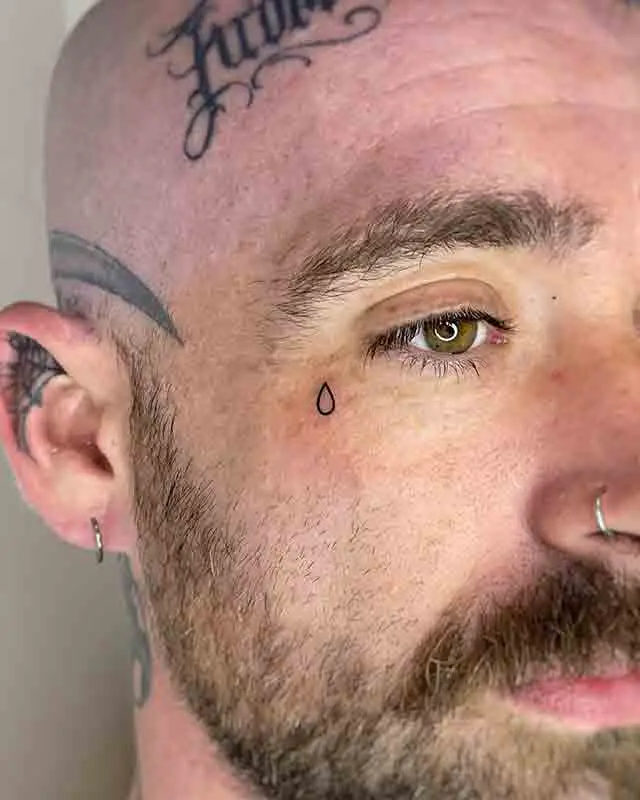
Another possible meaning associated with the teardrop tattoo is that it symbolizes a sacrifice made for a fellow inmate. In prison, relationships between inmates can be intense and complex, and it is not uncommon for individuals to make sacrifices or go to great lengths to protect others. This could include taking the blame for someone else’s actions or even enduring physical abuse in place of another inmate. The teardrop tattoo may represent such an act of selflessness and loyalty.
However, the most commonly known interpretation of the teardrop tattoo is that it signifies that the wearer has killed someone. This association stems from the tradition of prisoners getting teardrop tattoos for each person they have killed. This practice originated in the US prison system and has since spread to other countries. In some cases, the tattoo may have multiple drops, indicating that the wearer has killed more than one person.
Regardless of its intended meaning, the teardrop tattoo is generally associated with violence and is often used to intimidate others. Prison culture is notoriously violent, and individuals may use tattoos, like the teardrop tattoo, to signal their toughness or dominance over others. As a result, the mere presence of the teardrop tattoo can be seen as a warning sign to others.
Spider Web Tattoo
The spider web tattoo is one of the most prevalent tattoos found in prisons. It is often inked on the elbow or neck area and has a unique spider-web design that makes it easily recognizable. This type of tattoo carries several meanings, but they are all generally linked to criminal activity.
One meaning of the spider web tattoo is that it signifies a prolonged prison sentence. The intricate design of the spider web can represent the length of time spent behind bars, with each strand representing a year or a period of incarceration. In this context, the tattoo can be seen as a badge of honor among inmates who have served long sentences and survived prison life.
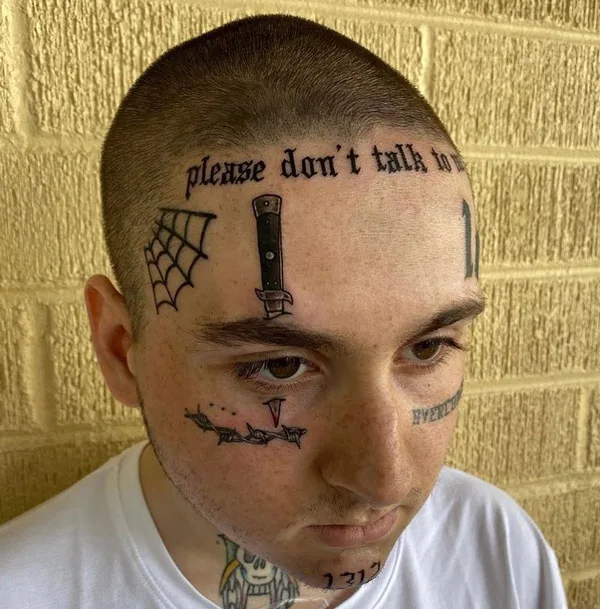
Another interpretation of the spider web tattoo is that it symbolizes the wearer’s entanglement in the criminal underworld. The spider web is often associated with deceit and manipulation, which are traits commonly found in criminal activities such as drug trafficking and organized crime. Thus, the tattoo can serve as a signal to other criminals that the wearer is part of their world and can be trusted.
Finally, the spider web tattoo can also indicate that the wearer is dangerous or violent. Spiders are predators that trap and kill their prey, and the intricate design of the spider web can suggest the complexity and cunning of the wearer’s criminal activities. In this sense, the tattoo can be seen as a warning to others to stay away from the wearer or face the consequences.
Three Dots Tattoo
The three dots tattoo is a common design that consists of three small dots arranged in a triangular pattern. This tattoo is often found on the hand or near the eye, and it can have different meanings depending on the context.
One possible meaning of the three dots tattoo is that it represents the phrase “Mi Vida Loca,” which translates to “My Crazy Life.” This interpretation suggests that the wearer has lived a wild and unpredictable life, perhaps marked by difficult circumstances or risky behaviors.
Another potential meaning of the three dots tattoo is that it symbolizes the Holy Trinity, which refers to the Christian doctrine of a triune God consisting of the Father, Son, and Holy Spirit. This interpretation suggests that the wearer is a religious person who holds this belief as an important aspect of their faith.

However, it’s important to note that the three dots tattoo can also be associated with gang culture, particularly among Hispanic gangs. In this context, the tattoo may represent membership in a specific gang or affiliation with a broader gang culture. It’s worth noting that not all people who wear this tattoo are involved in gangs, but it’s important to be aware of these associations when interpreting the meaning of the tattoo.
Barbed Wire Tattoo
The barbed wire tattoo is a common prison tattoo that features a distinctive design resembling the sharp, thorny strands of actual barbed wire. This tattoo can be found on various parts of the body, but it’s most commonly seen on the arm or wrist. The symbolism behind the barbed wire tattoo can be interpreted in several ways.
For many people, the barbed wire tattoo represents time spent in prison. In this context, the tattoo serves as a permanent reminder of the wearer’s past experiences and the challenges they faced while incarcerated. It can also be viewed as a badge of honor, signifying a person’s ability to survive and overcome difficult circumstances.
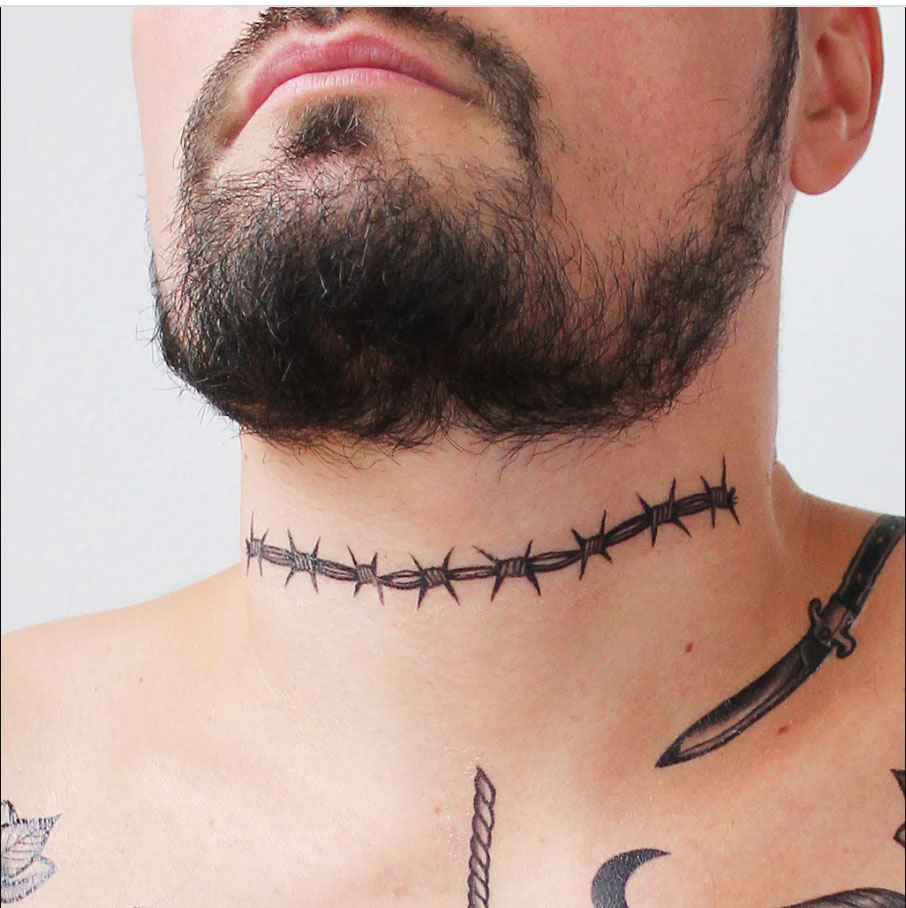
Another popular interpretation of the barbed wire tattoo is that it represents a desire to break free from the confines of prison life. For those who have been released from prison, the tattoo can serve as a symbol of their newfound freedom and determination to never return to that way of life. It can also represent a more general desire to overcome obstacles and escape from negative situations.
Finally, the barbed wire tattoo can symbolize the wearer’s toughness or resilience. The harsh, unforgiving nature of barbed wire makes it a fitting design choice for those who have endured hardships and come out stronger on the other side. It can also be seen as a warning to others not to mess with the wearer, as they are not easily intimidated.
Skull Tattoo
The skull tattoo is a popular prison tattoo that is typically seen on the chest or back of inmates. It features a stylized depiction of a human skull, which is often embellished with additional details like flames, daggers, or snakes. While some people may choose this design simply because they find it aesthetically pleasing, for many prisoners, the skull tattoo has deeper significance.
One common interpretation of the skull tattoo is that it represents a willingness to kill or die for one’s gang. In prison culture, gang affiliations are a significant part of an inmate’s identity, and gang members are expected to demonstrate their loyalty and devotion through violent acts. For those who have committed to this lifestyle, the skull tattoo can serve as a powerful symbol of their commitment to their gang and their willingness to do whatever it takes to protect their reputation.

In addition to its association with violence and aggression, the skull tattoo is often used to express the idea that the wearer is not afraid of death. For inmates who are facing long sentences or who have already been through traumatic experiences, the prospect of death may seem less daunting than it would to someone in the outside world. The skull tattoo can serve as a reminder that death is always a possibility, but that the wearer is prepared to face it head-on.
Finally, the skull tattoo can also function as a warning to others to stay away. Whether the wearer is trying to send a message to rival gang members or simply looking to assert their dominance within the prison hierarchy, the skull tattoo is an unmistakable symbol of danger and menace. By displaying this tattoo prominently on their body, the wearer is signaling to others that they should think twice before crossing them.
Cross Tattoo
Prison tattoos have been a longstanding tradition in the criminal underworld, serving as a means of self-expression and communication among inmates. While many prisoners get tattoos for purely aesthetic reasons, others choose designs with deeper meanings that reflect their personal beliefs or experiences.
One such tattoo is the cross tattoo, which holds significant meaning for many prisoners. Typically, the cross tattoo represents faith and hope in a higher power. For individuals who have found themselves incarcerated, the tattoo can serve as a reminder to turn to God or other spiritual forces for comfort and guidance during difficult times.
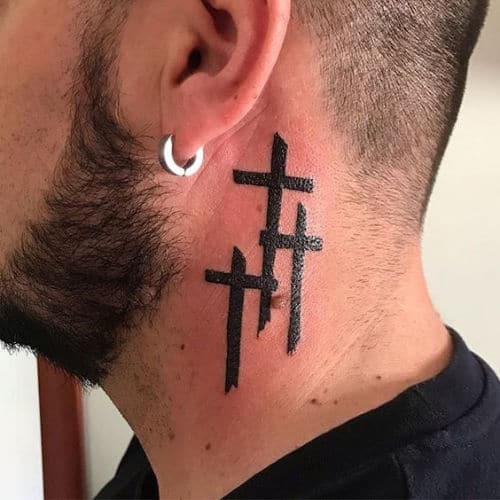
Additionally, for some inmates, the cross tattoo symbolizes a commitment to living a righteous life after being released from prison. Many prisoners struggle with addiction, violence, and other destructive behaviors, and the cross tattoo can serve as a powerful symbol of the desire to change and pursue a more positive path.
Clock Tattoo
A prison tattoo is a tattoo that is acquired while incarcerated in prison or other correctional facilities. These tattoos often carry significant meaning for the individual wearing them, and they can serve as a form of expression, belonging, and remembrance.
One common prison tattoo design is the clock tattoo. This tattoo typically features an image of a clock face with the hands pointing to a specific time. The clock tattoo symbolizes the passage of time and the fleeting nature of life. It serves as a reminder that time is precious and should not be wasted.
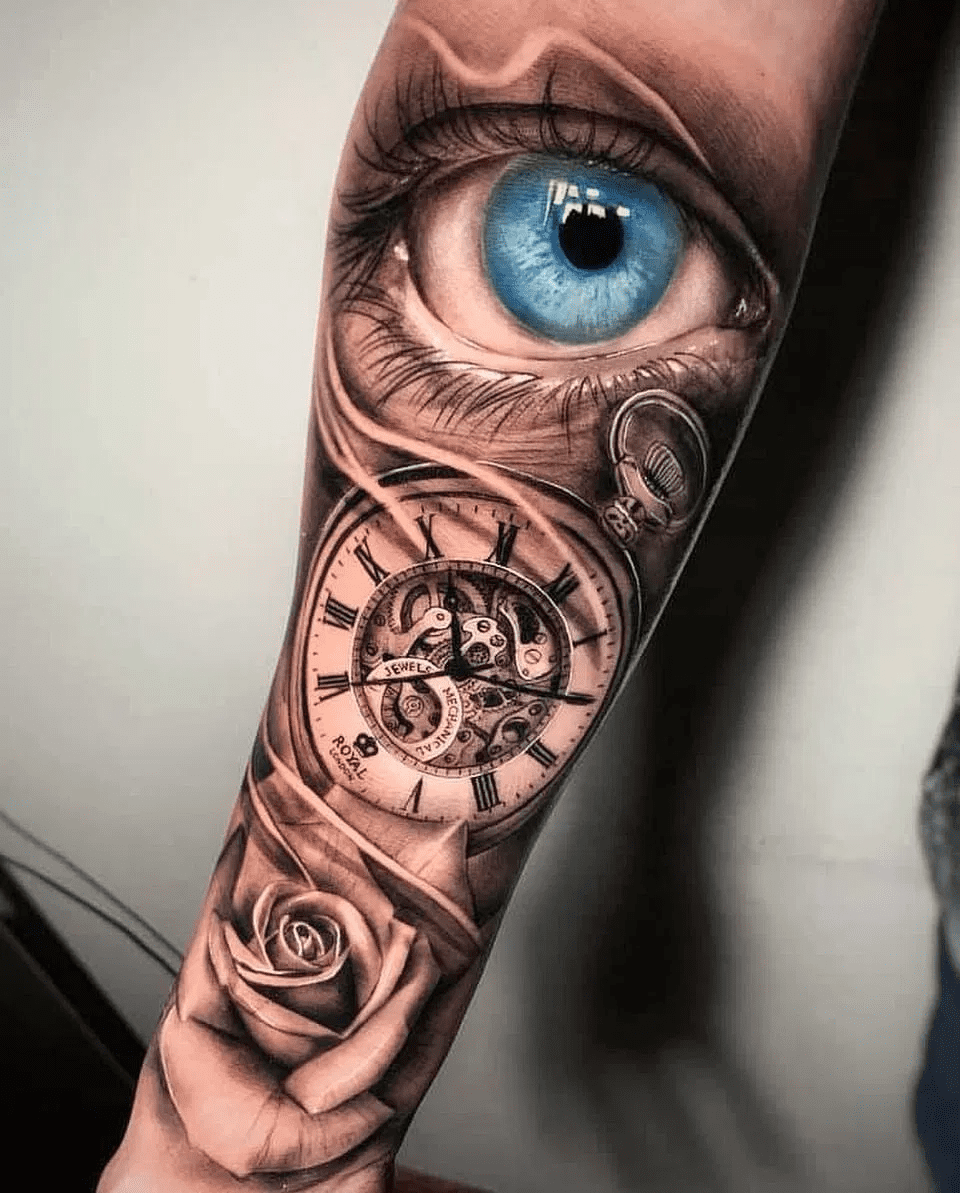
For those serving long sentences in prison, the clock tattoo takes on an even deeper meaning. It serves as a constant reminder of the time that has been lost behind bars. In many cases, prisoners who get clock tattoos choose a specific time that represents a significant event or moment in their life before incarceration. This could be anything from the birth of a child to the start of a successful career.
The clock tattoo is also often paired with other symbols, such as chains or barbed wire, to represent the feelings of confinement and restriction that come with being in prison. Some people may also add in additional design elements, such as roses or skulls, to give the tattoo a more personal touch.
While prison tattoos are generally considered to be a form of self-expression, they can also have negative connotations. In some cases, they may be associated with gang activity or criminal behavior. As a result, individuals who have served time in prison may face stigma or discrimination based on their tattoos.
Conclusion: Prison Tattoo Meaning
Prison tattoos are a unique aspect of prison culture. They carry significant meaning and symbolism that goes beyond mere body art. Understanding the meanings behind these tattooscan provide insight into the wearer’s experiences and affiliations within the prison community.
While not all inmates with tattoos are affiliated with gangs, these designs are often used to signify membership in specific groups or factions. Other common prison tattoos, such as the teardrop, spider web, barbed wire, cross, and clock tattoos, also hold various meanings.
Prison tattoos serve as cultural artifacts that tell stories about the people who wear them. While the significance of a prison tattoo may change over time, it will always hold a special place in the wearer’s life.
In conclusion, understanding prison tattoo meanings is essential to understanding the complex world of prison culture. These tattoos carry deep symbolism and meaning and can serve as a window into an inmate’s experiences behind bars.

I am Harvey Berry, a tattoo enthusiast who has immersed himself in the diverse world of ink, passionately exploring the beauty and artistry within each tattoo. My mission extends beyond uncovering the aesthetics of tattooing; it involves sharing in-depth knowledge across all aspects of this art form.
Fueled by genuine curiosity and love for every facet of tattooing, I have diligently crafted well-researched articles, with a special focus on the Tattoo Meaning of Impeccable Nest section. Here, my aim is to help the tattoo community gain a deeper understanding of the meanings and values embedded in each tattoo.
One of my primary goals is to encourage responsible decision-making when it comes to getting inked. I recognize that choosing to get a tattoo is a significant personal decision that requires careful consideration. Hence, I provide diverse resources covering the meaning of tattoos, the tattooing process, aftercare tips, and other valuable information.
Whether you are a seasoned tattoo enthusiast or embarking on your first exploration of the world of body art, I aspire to be a reliable resource for you at every step of your journey. I hope that my extensive knowledge of tattoos, especially in the Tattoo Meaning section, will assist you in finding inspiration to express yourself through the art of tattoos.
